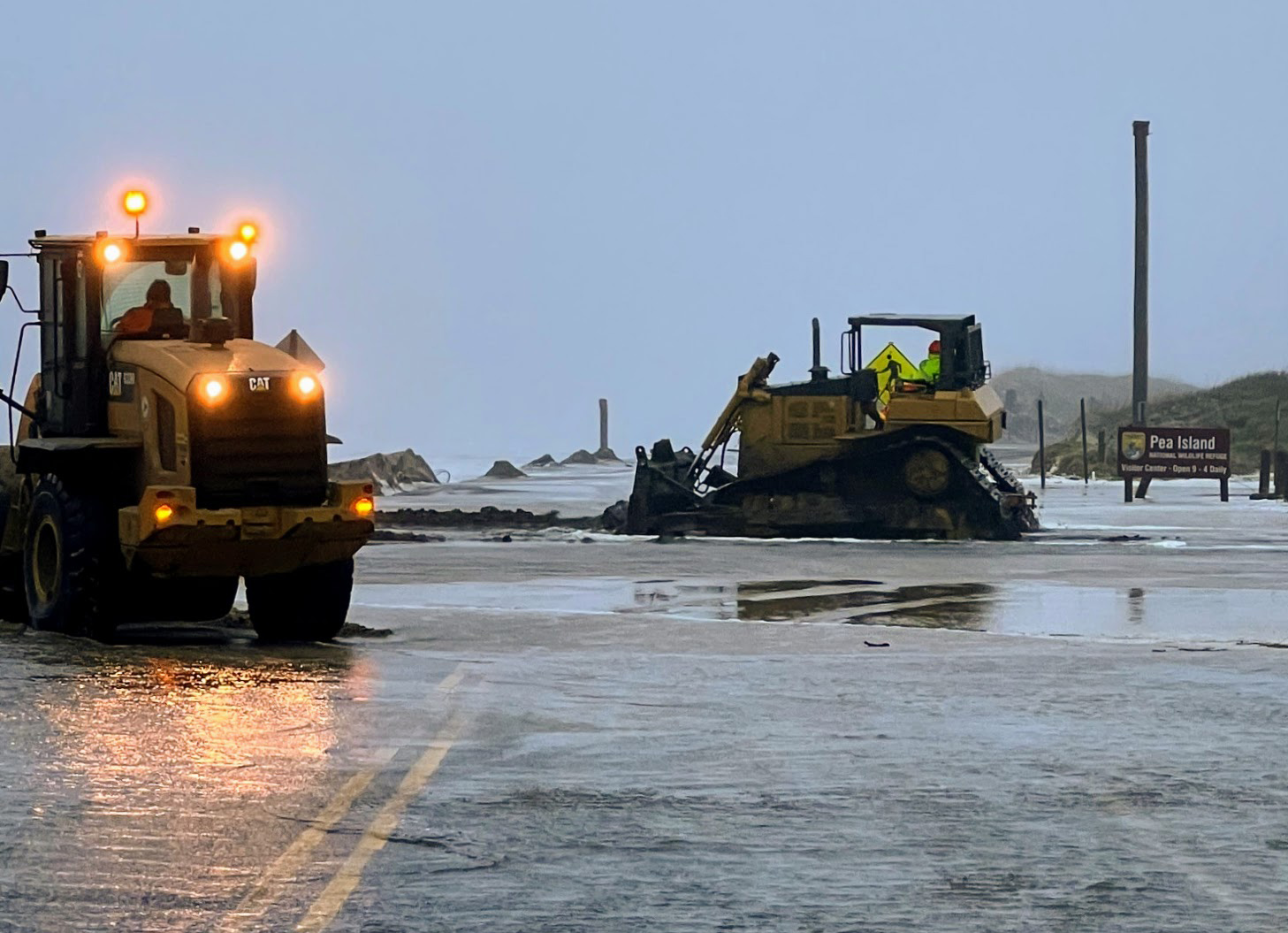Outer Banks, much of N.C. coast back in moderate drought

A late-winter dry spell has pushed the Outer Banks and most of North Carolina’s coastal sections back into moderate drought conditions, just as a wildfire continues to smolder on the Dare County mainland.
A warm, dry week has spurred an expansion of Abnormally Dry (D0) conditions and Moderate Drought (D1) especially in eastern N.C., according to the N.C. Climate Office infographic released Thursday.
Climatologists added that while wintertime moisture remains in some areas, warm spring days have also depleted it in spots that haven’t had much rainfall recharge and dryness is most pronounced at the coast.
Data for this week’s update was collected before a period of light to moderate rainfall settled into the region from a front lingering offshore. Another system will move through on Saturday that could bring up to an inch of rain.
The move back into drought conditions locally comes after January’s multiple storm systems brought much needed moisture to northeastern North Carolina and the Outer Banks that wiped out severe drought conditions in December.
Data from the National Centers for Environmental Information shows statewide average precipitation last month was 2.47 inches, the 31st-driest February in the past 128 years, according to Assistant State Climatologist Corey Davis.
New Bern totaled just one inch of rain all month for its 2nd-driest February in the past 69 years, Davis said. Washington had only 1.11 inches and its 2nd-driest February on record.
In past droughts, mainland areas where the Alligator River National Wildlife Refuge and Dare County Bombing Range are located have been prone to wildfires that have ignited the nutrient-rich peat soils and smoldered for months.
A wildfire in the bombing range northwest of Stumpy Point has consumed 1,065 acres this week and was 60 percent contained Thursday morning.
















